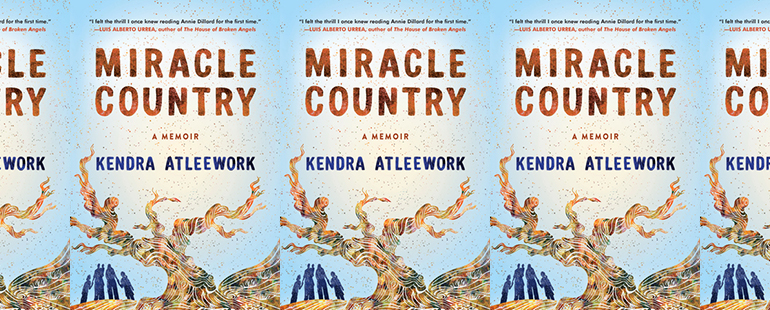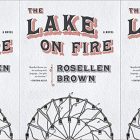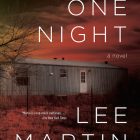Miracle Country by Kendra Atleework

Miracle Country
Kendra Atleework
Algonquin Books | July 14, 2020
Kendra Atleework’s memoir Miracle Country opens with two major events: the California wildfires of 2015 and Atleework’s rushed return to the Owens Valley, where the fires reached and threatened her childhood home. Atleework’s home is safe in the end, but this opening introduces two themes the book explores: the danger inherent in the California desert landscape, and Atleework’s intense attachment to this area she calls home. It also introduces her family as being at the root of Atleework’s connection to the Owens Valley; neither of her parents were originally from the region, but both felt a bond with the landscape—its hiking trails and beauty and possibilities, good and bad. Atleework’s mother passed away when she was sixteen, and this loss shapes Atleework’s poignant and skillful exploration as she connects her memories and the history of the Owens Valley to tell her own story of her home.
Atleework shares a reality learned from living in the Owens Valley that she has been aware of since childhood: “water runs until it doesn’t.” This reality is formative; throughout the memoir, she references how comfortable she is in potentially dangerous environments because she has always been aware of environmental danger, and that awareness keeps her safe. The simplicity of the statement here is, like many of Atleework’s precise observations, aphoristic, its application both wide-reaching and worth unpacking, especially after the opening scenes of the fires. She links her awareness that water is not guaranteed to writer Richard Rodriquez’s reflections on the desert near Jerusalem and living in an area defined by absence. The absence of water, or the possibility of its absence, allows Atleework to deftly tease out a distinction between emptiness and absence. Challenging the views of a desert as empty instead of full, she grapples with the impact of losing her mother, exploring the ever-present feeling of this loss.
In the same way, the absence of water shapes the Owens Valley, an important location in California’s water wars. Atleework recounts the treaties confirming the Paiute people’s rights to the area that sat unratified and then unrecognized as she reflects on her brother’s affinity for the reservation and his choice to live there as a teenager. Atleework also discusses the controversy of the Los Angeles Aqueduct, which has diverted Owens River water to the city for the more than a hundred years, and makes the important point that the Owens Valley isn’t naturally without water. This sets up a framework for Atleework’s move to Los Angeles, and her sister’s soon after; Los Angeles seems like the only place to go, but Atleework never feels at home. Because of the resentment forged by the Los Angeles water rights, the people in places like Bishop and Swall Meadows—neighboring towns where Atleework has lived—continue to protest these water rights, particularly as climate change prolongs droughts and devastating wildfires like those described in the book’s opening scenes become more commonplace.
Atleework captures how the history of the landscape affects how people feel in the present in prose charged with emotion. Her passion for the region is clear, as is her own authority as a resident and a researcher. Because of this, even when Atleework isn’t referencing these water rights or the landscape explicitly, the scenes are imbued with importance and urgency, influenced by their setting. Atleework, too, fluidly blends the history of this region with her own family history. The landscape is more than a backdrop for memories of growing up, more than a setting for her childhood lessons; instead, the desert and surrounding mountains drive and shape both her memories and these lessons.
When her mother dies, Atleework isn’t able to put into words to a classmate that, although she and her siblings went to church with her mother, she doesn’t have any god, and neither does her father. Instead, she and her father have their surroundings: “the moon, when it shines so brightly it casts shadows, when it rises over desert and mottles the cloud, makes both of us remember.” Years later, Atleework is with her father when he speaks of Friedrich Nietzsche’s view of God’s unstable existence as a belief. Atleework points to a subtlety that her father missed—Nietzsche’s concern about a god no longer existing: “In my reading, Nietzsche didn’t fear the absence of a concrete deity in the lives of people. He feared the absence of meaning, of mystery and love.” In her father’s reading, Nietzsche focused on the end of God’s existence, while Atleework’s focuses on the impact of that loss. Here, she suggests the distinction between absence, forming a negative as a result of a loss, and emptiness, the existence of a void.
Atleework also regularly references the writer Mary Austin, who moved to the Owens Valley in the early twentieth century and wrote about the area. Atleework speculates that Austin’s writing of the area was so successful because she understood this crucial distinction: “Perhaps the apparent emptiness of country that isn’t empty at all guided her writing. She seemed to understand the lingering kind of absence.” Atleework, too, understands this lingering absence in the history of the region and landscape through the loss of her mother. The loss of a parent, especially at a young age, shapes her worldview, and so does the region’s loss of a resource as essential as water. For Atleework, this loss created her appreciation for the area, her feeling of home in the Owens Valley. In the Owens Valley, cliffs and canyons have been worn by water, their ledges and heights created by its absence.
Miracle Country is a beautiful read, Atleework’s prose steeped in her passion for the region and her striking observations. Even more, though, the memoir is important because it reveals Atleework’s deep understanding of the region, of a life defined by an absence, and she points us to the power in this understanding—it can be a tool to stay safe in a desert or on a cliff, a way to connect with other people, a call to counteract climate change, or, as in Atleework’s case, a reason to return home.



